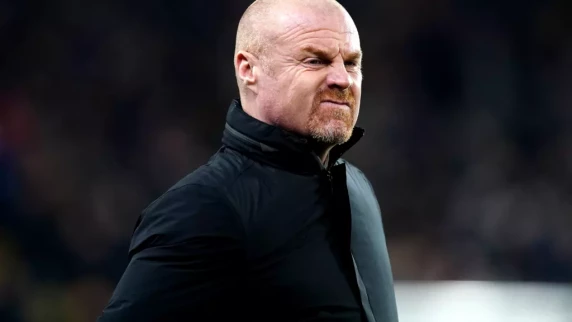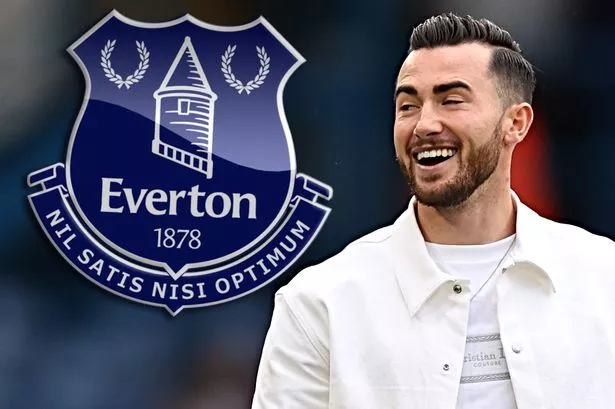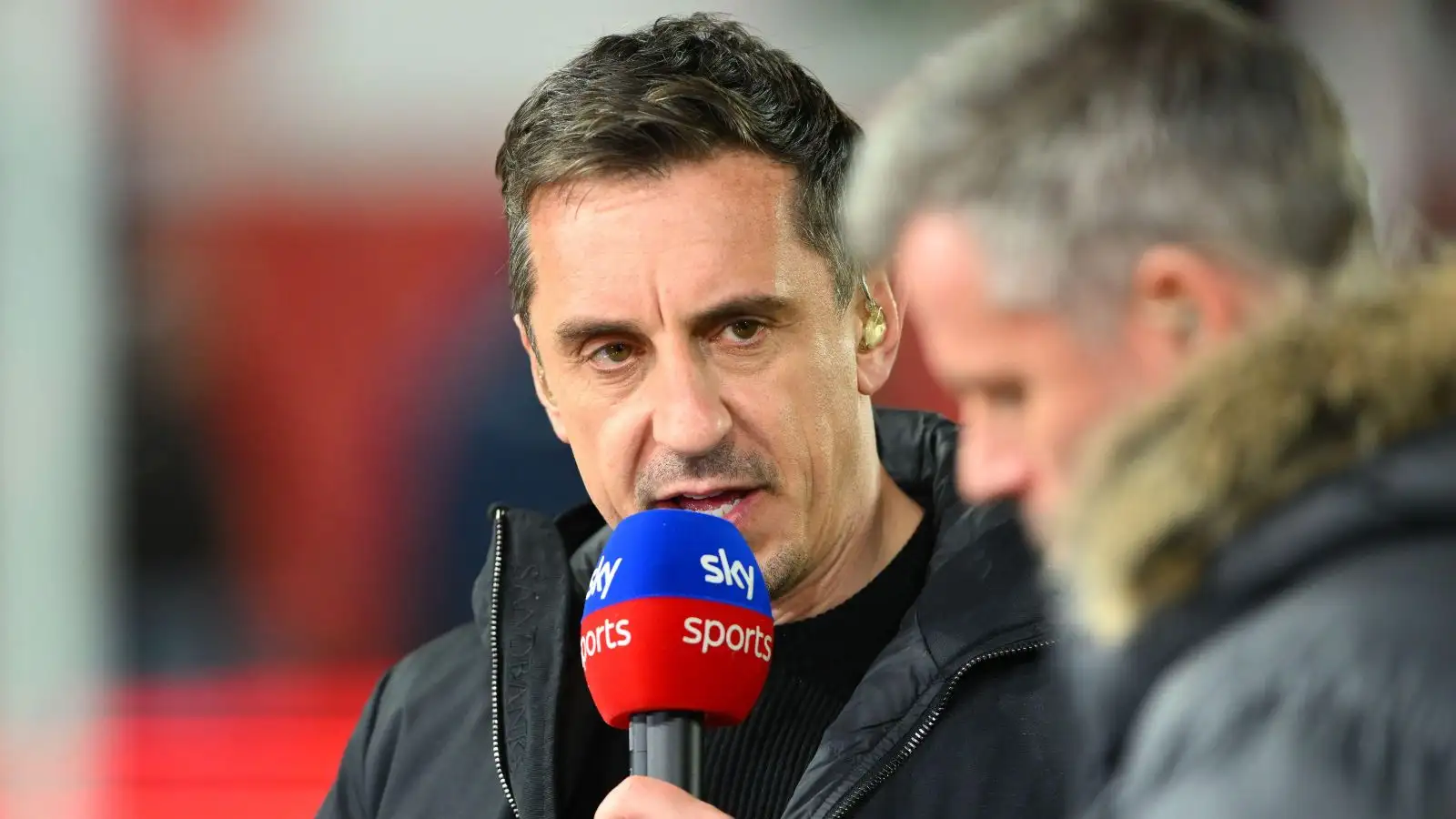Introducing the Dyche Zone: Why the Everton manager is right to favour deep free kicks

When it comes to free kicks, Sean Dyche has knowledge that your favorite contemporary managers do not. He knows they’re not lumping it long enough.
Call his football ugly if you want, call it primitive or old-fashioned, but on this one he’s probably right.
We will refer to a free kick taken between a team’s own third and the halfway line as a “deep free kick” because it usually has no value. There’s a reason you don’t pay attention to fouls in that part of the pitch. Most teams will simply tap the ball sideways and get back to building up as though play never stopped.
But Dyche’s teams don’t do that. His Everton side today, like Burnley when he previously managed them, treat deep free kicks as an attacking set piece. Using the play-stoppage, they will move almost every player into the Dyche Zone, a small area near the top of the opposing team’s penalty area. They will then bring their goalkeeper, Jordan Pickford, forward to attempt a long, hopeful free kick into the mix.
If you’re used to watching other top-flight teams, this can look… weird.
But it works! On the free kick above, against Luton Town in September, Pickford’s delivery (see the video below to watch it unfold) lands in a crowd beside the penalty spot and is cleared with a header.
Everton are prepared for this. They have four players waiting at the edge of the box for a second ball. That clearance falls to James Garner, who puts a cross right back in, and, in the ensuing goalmouth scramble, Dominic Calvert-Lewin taps the ball into the net.
Goals don’t get much simpler.
Tactically, there’s nothing revolutionary to what Everton are doing: it’s just a long kick with some runners, some second-ball winners and a couple of guys hanging back to cut out counter-attacks. Anyone could do it. And in stoppage time, especially when they’re chasing the game, a lot of teams do.

The fact most teams won’t take long free kicks until the end of a half suggests that coaches see it as a risky tactic. They’re wrong. In fact, lobbing the ball into the Dyche Zone is easily the best way to use a deep free kick.
In order to capture the ripple effects of build-ups following short free kicks or counterattacks following long ones, let us examine the expected goal value of several deep free kick strategies over the next thirty seconds.
On average, a Premier League team that chooses to take a deep free kick short will go on to score 0.7 per cent of the time within the next 30 seconds. They’ll also concede 0.2 per cent of the time, for a net 30-second expected goal difference of +0.005.
To put it another way, we would anticipate that a team would earn a total goal difference of +1 if they took 200 deep free kicks the way they usually are, which would end somewhere short of the final third.
For a Dyche-style set piece, the attacking numbers get much better while the defensive numbers stay about the same.
A deep free kick into the Dyche Zone will go on to score 1.1 per cent of the time and concede 0.2 per cent of the time, for a 30-second expected goal difference of +0.009. From 200 deep free kicks into the Dyche Zone, we’d expect a goal difference of +2.

What’s interesting about these averages is that the teams putting balls into the Dyche Zone are not, generally speaking, very good at football. Their goal difference is usually negative. On the other hand, teams are more likely to try Dyche Zone free kicks against strong opponents whose high press they would rather avoid.
If the strategies were equally effective, we would expect short free kicks (which good teams do against bad ones) to have better average outcomes than Dyche Zone lobs (which bad teams do against good ones).
They don’t — not even close.
A free kick into the Dyche Zone is about twice as valuable as a short one. That’s true early in the game as well as in stoppage time. Even ‘Big Six’ clubs, who tend to prefer slow build-up attacks, get better results when they launch their deep free kicks long.

It’s not too hard to figure out why this works.
In general, it’s a good idea to avoid risky passes in your own half and get the ball near the other team’s goal, but trying to skip the build-up with a long ball in open play isn’t usually an effective strategy because the attacking side can’t get numbers forward fast enough to win the ball or counter-press after turnovers. (As Pep Guardiola’s long-time assistant Juanma Lillo puts it, “The faster the ball goes, the faster it comes back.”)
A stoppage of play solves that problem. It is a free chance to pack every player and ball into the most advantageous area of the field, close to what former English FA director of coaching Charles Hughes used to refer to as “positions of maximum opportunity” (POMO).
Football is more of a field-position sport than we sometimes acknowledge. The ball is bouncy. The game is messy. It is a clever move to manipulate the odds to create well-organized mayhem in front of the opposition’s goal, far away from your own.
So why isn’t everyone launching free kicks into the Dyche Zone all the time?
One reason may be that it just looks funny.
Long free kicks remind people of the bad old days of English hoofball. The Dyche strategy is more common in League One, the third tier of the professional game in England, where teams play a simpler, more atavistic style of football. Nobody in the richest league on Earth dreams of playing Barnsley Skyball.
It’s also possible that 30-second expected goal difference mentioned above just isn’t the right way to measure the value of free kicks.
The competitive advantage of long free kicks is tiny — it’s less an insight into how to win the game than how to think about winning it. An average Premier League team only take about 100 deep free kicks per season, so it would take two years for switching from short kicks to a more optimal long-ball strategy to amount to even one goal’s difference.
Maybe playing attractive football is more important than that.
But for most managers, every goal matters.
After Dyche, the list of Premier League coaches who use long free kicks includes not only old-school veterans but also up-and-comers such as Eddie Howe, Thomas Frank and Graham Potter. These guys aren’t afraid to play like a lower-division side — they were coaching at that level not too long ago — and that humility can be useful to smart, modern clubs trying to scratch out small edges.
One of the nice things about football is that analytics and aesthetics aren’t always at odds.
Guardiola-style positional play, with its handsome passing and adventurous high pressing, really does seem to be a smart way for a lot of teams to get results. But anyone who follows baseball or basketball, sports which are further along the data learning curve, knows that playing a game more efficiently doesn’t always mean playing it more beautifully.
GO DEEPER
Get it launched — why long throw-ins into the penalty area are undervalued
Don’t be surprised if we see more teams experimenting with supposedly primitive tactics that can help them win.
Frank’s Brentford are doing it with throw-ins into the box. Everton are doing it with long free kicks into the Dyche Zone. They’re bucking stylistic trends and embracing football’s fundamental chaos.
They won’t look so funny if it works.



